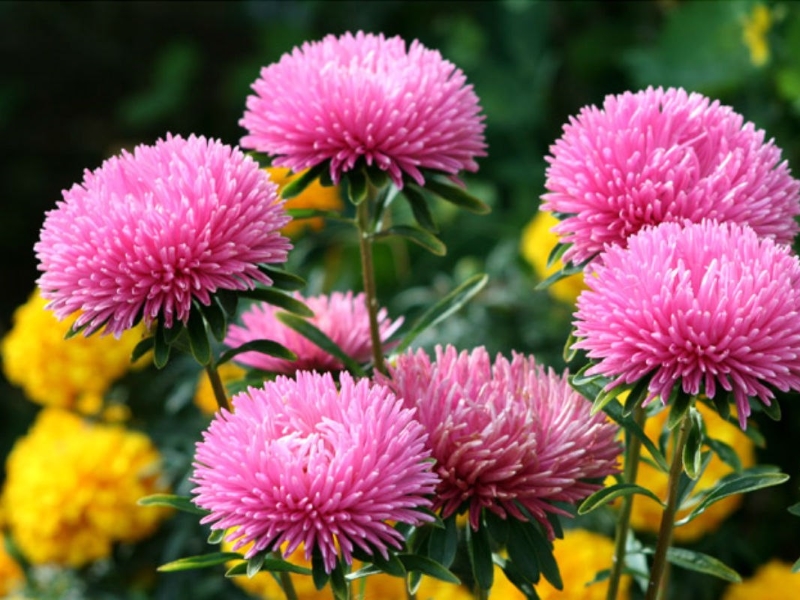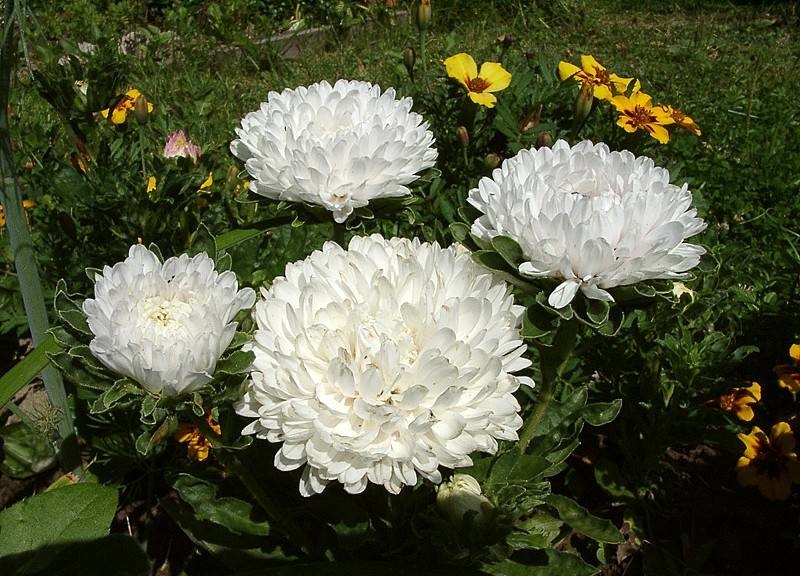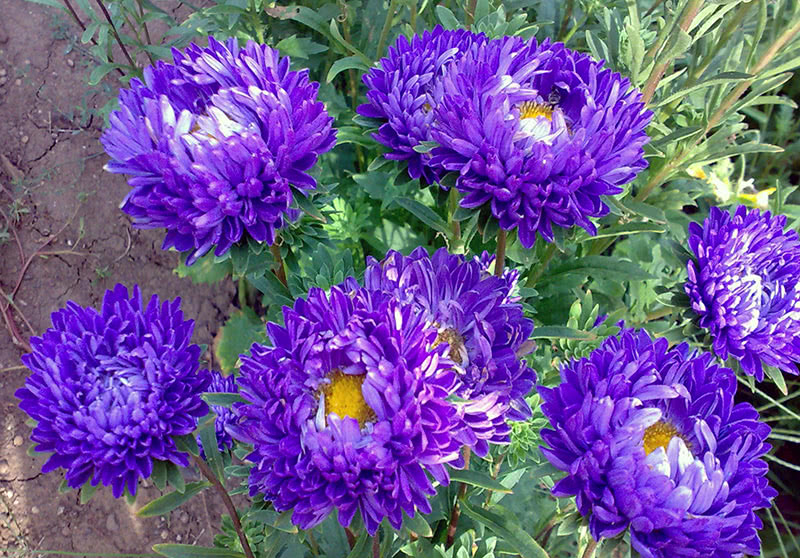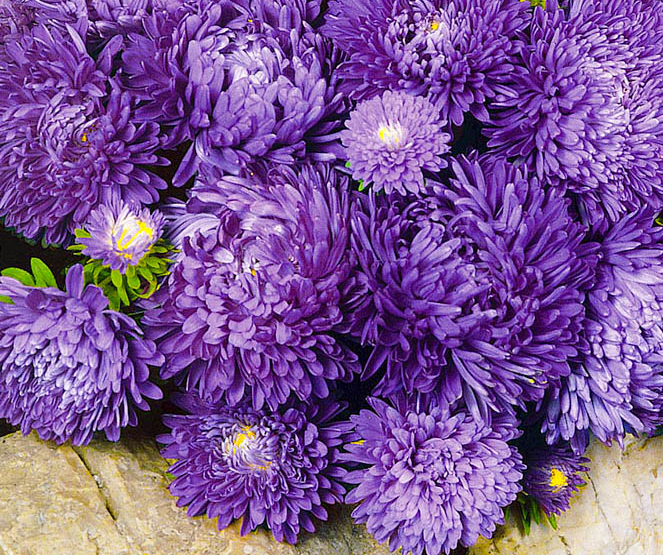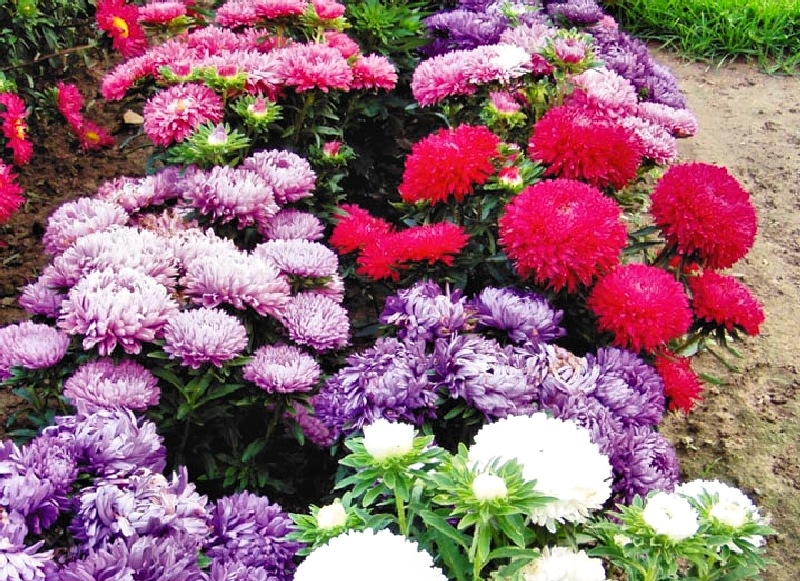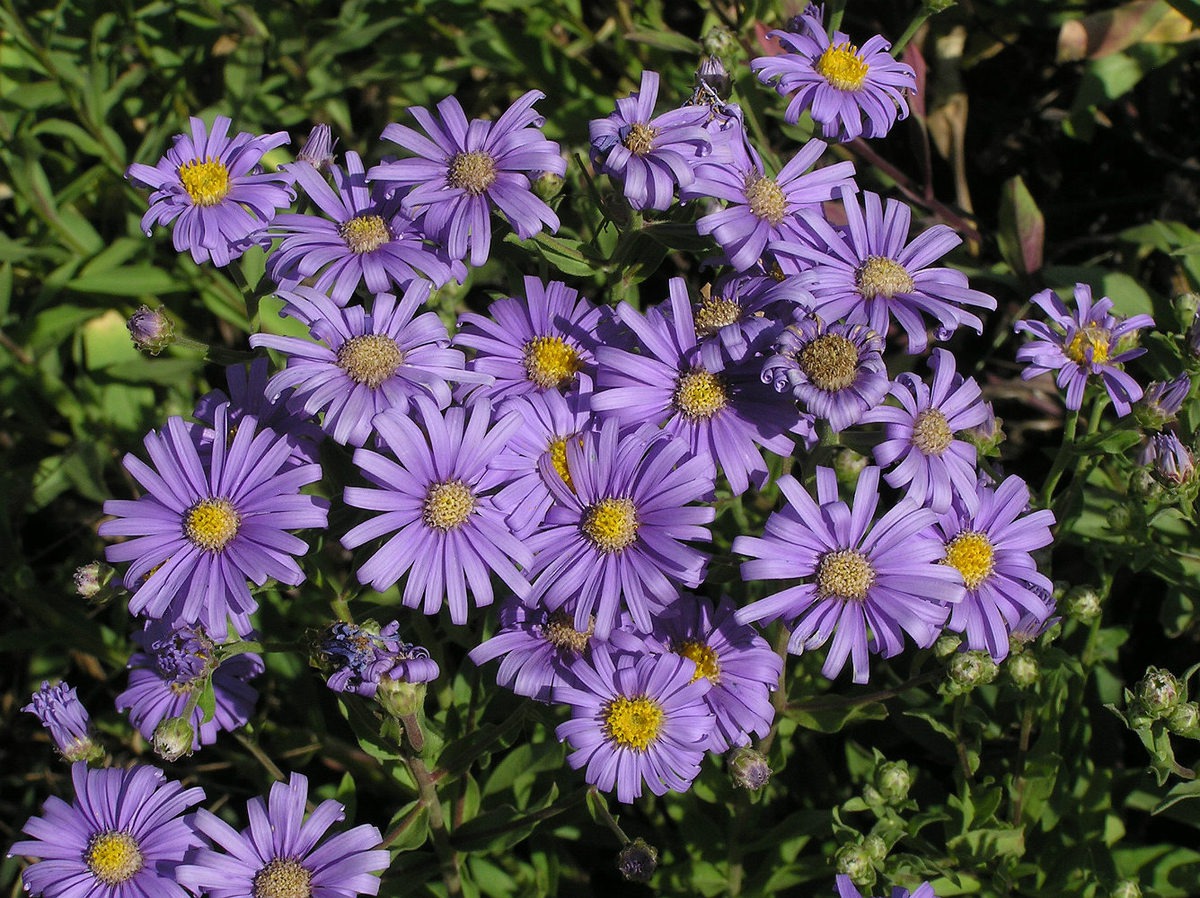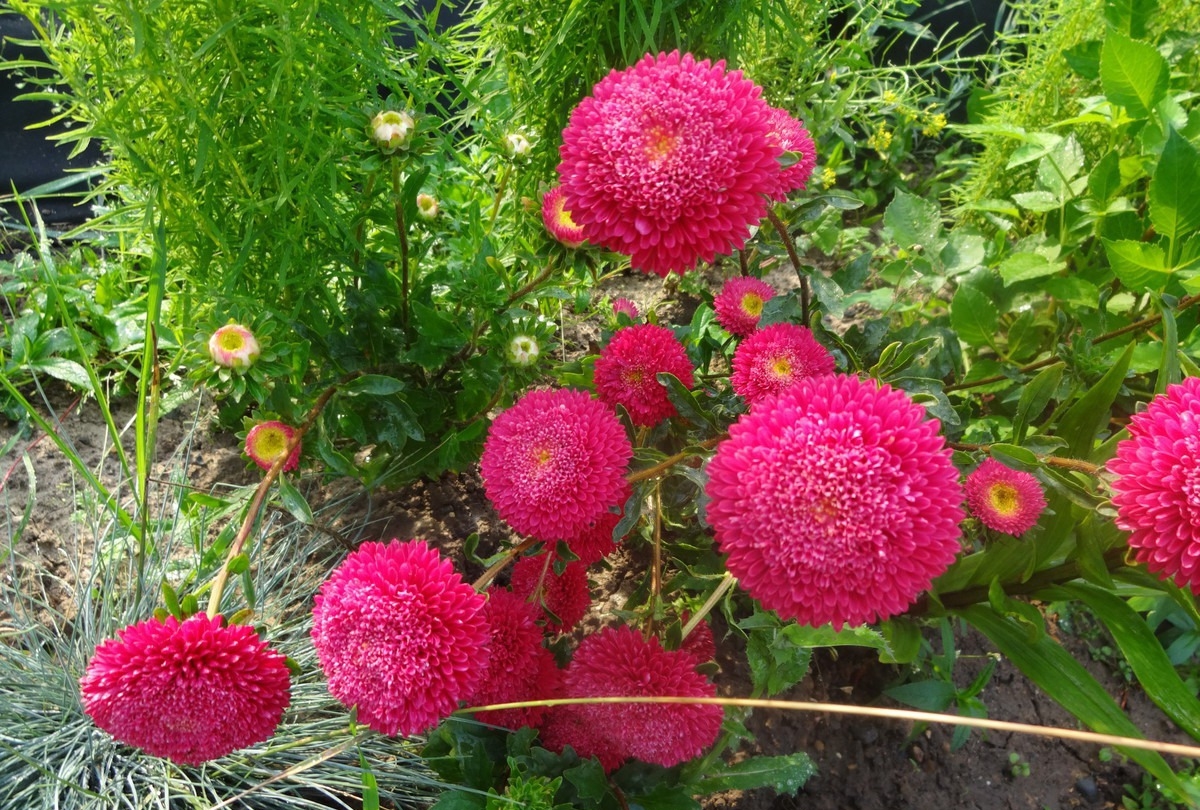Astra Milady is one of the most popular varieties among other varieties of asters. It is appreciated by gardeners for its simplicity in care, splendor and variety of colors of buds during flowering, which retain freshness for a long time. These annuals are compact in size, so they do not take up much space in the garden. The good news is that flowers bloom at the end of summer, when the rest of the vegetation is already dying off.
Content
What colors are Milady's asters: photo
Astra Milady is an annual dwarf-type herb no more than 25 cm high. It is distinguished by large-scale double inflorescences (up to 10–12 cm in diameter) of various colors. The flowering period begins in July and lasts until the end of September.
The Milady aster color mixture includes many varieties that differ in color:
Milady's asters are grown for decorating borders, loggias and fences. They are planted in pots, which are placed on loggias and balconies. This variety is characterized by high resistance to negative weather factors and various diseases. Plants take root successfully both in the garden and at home. Milady begins to bloom two weeks earlier than other types of asters. They remain fresh even after cutting for up to 15 days.
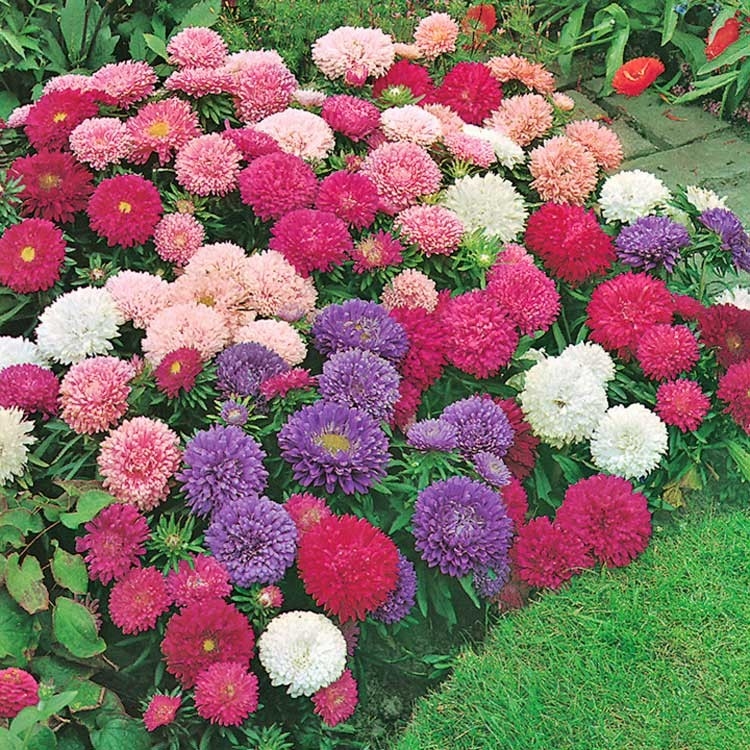
Planting dates in 2019
Typically, seeds for seedlings are sown in April - May. It is important that the seedlings meet the following conditions before being transplanted to the street:
- age - at least a month;
- height - 6–8 cm;
- the presence of strong roots.
Seedlings can be grown at home or in a heated greenhouse. In regions with a warm climate, seeds are sown directly into the ground in spring or autumn. But then germination will be longer, which will delay the flowering period. In the case of sowing before winter, the seeds undergo natural stratification, therefore, with the first spring heat, sprouts are already hatching.
Before March, planting seeds for seedlings is not recommended, since asters are very stretched and thinner. As a result, the stems lodge and wither quickly.
When sowing aster seeds, they are guided not only by climatic conditions, but also by the lunar phases. Like most flowering crops, Milady's asters are planted on the growing moon. Optimal landing dates for asters according to the lunar calendar:
- March: 17, 19 and 26;
- April: 7-12, 16, 18, 25.
Terms of planting seedlings on a personal plot by region:
- in the Moscow region - from the first days of May to the end;
- in the Urals - from mid-May, throughout the month;
- in Siberia - in early June.
Growing seedlings from seeds: step by step instructions
The first step is to prepare a loose and fertile substrate, which is suitable for garden soil, flavored with humus. You can use ready-made purchased soil. Before planting the seeds of Milady's aster, the earth is disinfected over steam or kept in the cold for 1-2 days.
Aster seeds have a limited germination period - no more than 2 years... Therefore, it is recommended to purchase fresh, then the sprouts will germinate faster. Planting material requires preparation.First, it is soaked in warm water for about a day, then briefly immersed in a manganese solution.

Then they adhere to the following algorithm:
- Boxes or cassettes with a mesh size of 4–5 cm are filled with prepared substrate. Pour water over it and wait a while until it is completely saturated.
- The seeds are pressed to a depth of 0.5 cm. They adhere to an indent of 1.5-2 cm.
- Spread a thin layer of earth or sand on top.
- Cover the containers with glass or plastic wrap to create a greenhouse effect.
- The plantings are rearranged in a bright and warm place where the temperature does not drop below 20 ° C.
The first shoots appear in 10-12 days. During this time, it is necessary to open the glass (film) daily to ventilate and remove accumulated condensation. The seedlings should be regularly watered moderately.
As soon as the first shoots hatch, the surface protection is removed and the container is moved to cool (at a temperature of + 17 ... 18 ° C).

Further care involves a number of standard measures:
- airing the room;
- watering with water at room temperature, previously settled;
- creation of daylight hours lasting 13-14 hours.
Watering should be done as the upper soil layer dries up. In case of a lack of light, an additional phytolamp is installed, which is turned on in the morning and evening hours.
You can start diving when several real leaves have formed. The seedlings are distributed in separate pots and watered with liquid complex fertilizers (prepared according to the instructions). If the cassette method of growing seedlings is used, then this stage is skipped..
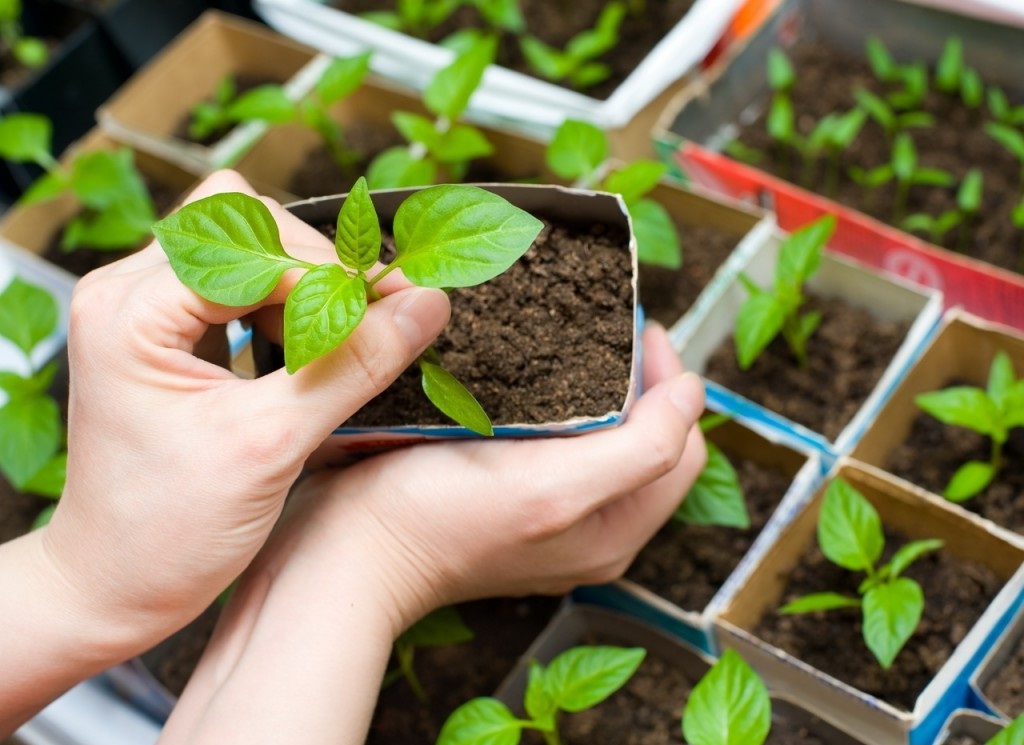
Seedlings are hardened 2-3 weeks before moving to a permanent place in the garden. Every day, they open the window for a certain time: they start from 15-20 minutes, gradually increasing to 2 hours.
Transplantation and follow-up care
After 5–6 weeks after planting, the seedlings are definitely ready for relocation to open ground. Despite the frost resistance of asters, it is recommended to plant them in warm weather. This is usually done in mid-May. The plot picks up well-lit and at a low elevation to eliminate stagnant water. The soil is preferable light and drained. It is dug up in the fall with the introduction of humus and leaf compost (5 kg per 1 sq. M). Manure is contraindicated, as it causes fusarium in plants.
The best predecessors for asters are calendula and marigolds.
- Dig holes for seedlings no deeper than 20-25 cm, since the roots grow close to the surface. An indent of 25-30 cm is made between the bushes. The rows are spaced from each other at a distance of 30-35 cm.
- Seedlings are buried and watered abundantly, trying not to soak the foliage. The main thing is not to injure the root system during the procedure, otherwise the plants may not take root in a new place.
Asters are unpretentious, easily adaptable to any conditions. But this does not exclude care measures:
- Water as needed. The main thing is that the soil does not dry out. With a lack of moisture, the flowers dry and wither quickly. Stagnation of water is unacceptable, which entails decay of the roots. In persistently dry weather, the frequency of humidification increases. Water is taken warm and previously settled. The optimal time for watering is morning and evening.
- After each moistening, the soil is loosened and weeds are removed.
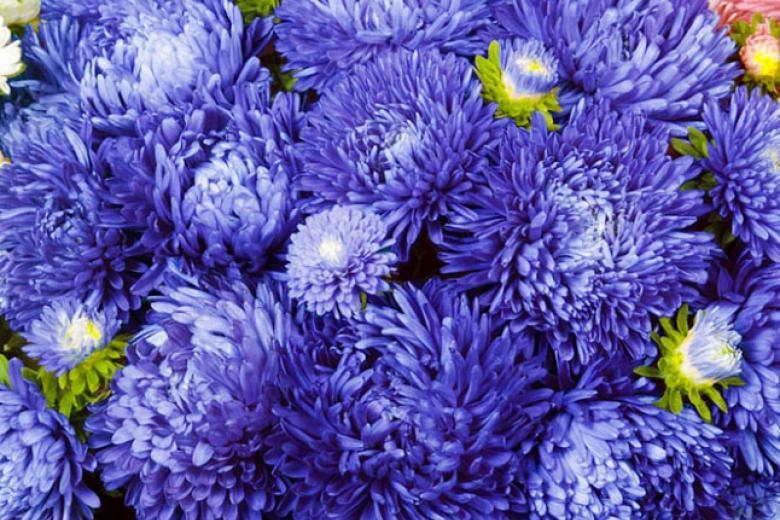
- Liquid mineral dressings are introduced in a timely manner. Fertilize the Milady variety three times per season: 2 weeks after planting, during the formation of buds, immediately before flowering. For the first feeding, mix urea (35 g), potassium sulfate (25 g) and superphosphate (35–40 g). Dissolve in a ten-liter bucket of water and water the bushes under the root. For the other two treatments, prepare the same solution, excluding urea.
- Withered inflorescences and leaves are immediately cut off.
After flowering, you can collect seeds for planting next year. To do this, they wait until the buds completely wither and become dark. Since asters are annuals, in late autumn they are pulled out by the roots and thrown into compost or burned.
With proper care, Milady's asters get sick a little and are rarely attacked by pests. They get sick mainly with excessive moisture or as a result of planting poor quality material. Milady's asters are considered the best option for decorating flower beds. They look no less impressive in the form of bouquets. And the variety of colors allows you to create flower beds of various colors.
